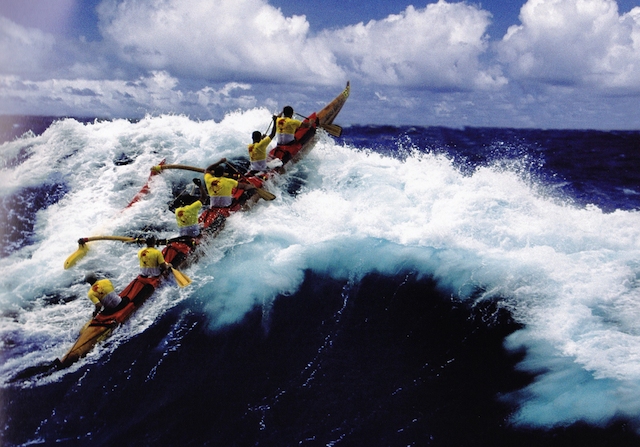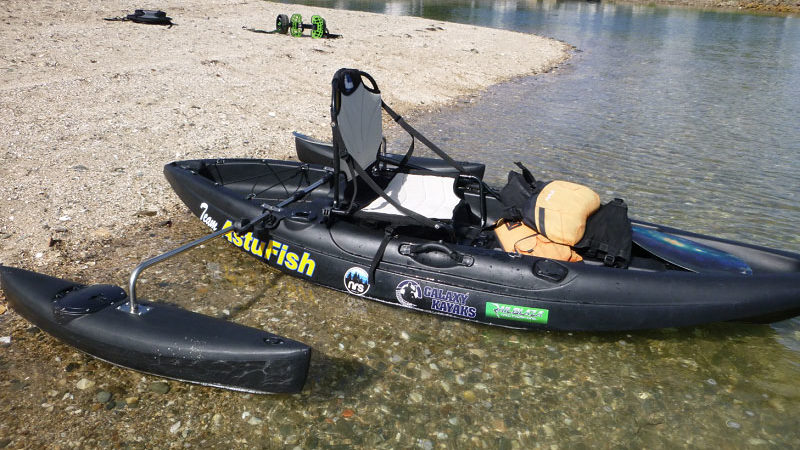What is the use of a kayak floater? One of the main obstacles we hear about kayaking is the instability of the boat. And it can even turn to anguish for some people when it comes to deck kayaking. The rolling manoeuvre of returning the body (and head) out of the water after a turnaround to a vertical position, although quite simple to perform once you have learned the technique, can be scary. And this goes so far as to prevent some people from enjoying this activity, even though it is accessible to everyone! The solution against instability? The stabilization floats!
History
The idea of adding a side float to a boat to stabilize it is not a new one. Far from it! Indeed, Polynesians have applied this principle to their canoes since time immemorial, to the point that it has allowed them to explore the entire Pacific, colonizing the islands of the largest ocean on our planet. From Micronesia to Easter Island, from New Caledonia to Hawaii, in the end, all these explorations would not have been possible without the lateral stabilization floats. So if the glorious explorers used this technique to tame the Pacific, why not use this proven technique again?
The principle is simple: to add to a thin and profiled boat, facing the slide but therefore fundamentally unstable, a lateral extension that will not slow down the slide of the boat but simply act as a pendulum. This lateral arm, in addition to stabilizing the boat by pendulum effect, will also lean on the water by means of a float placed at its end, parallel to the boat.

In the past, Polynesian pirogues and Eskimo kayaks had only one stabilizer, which was sufficient in most cases. It should be noted, however, that in the 1930s, the Englishman Gino Watkins, who was studying the Inuit way of life, and therefore seeking to live their way, died because the seal targeted on the right (while the paddle serving as an auxiliary float was extended to the left) had passed in front of the bow. Watkins had waited too long and fired when the seal was on the left. As a result, the recoil of the rifle caused it to capsize because there was no support. His bearskin pants were found on an icefloe, but never his body.
The modern kayak side floater
Fortunately, however, this simple principle has been modernised and now allows the boat to be supported on either side of the boat for optimal stabilisation. No need for arms of several meters: modern floats are now placed close enough to the kayak, at the front or rear of the boat, and they are profiled to ensure perfect gliding!
Nowadays, it is used to stabilize unstable kayaks. As such, there are many applications:
- If you want to face the high seas in a kayak, it is highly recommended because it softens the crossing of swell lines and stabilizes the boat in case it goes surfing.
- to stabilize the kayak during fishing sessions: kayaking is becoming more and more popular among fishermen but being able to stand on any kayak is not possible and is not within reach of anyone. Moreover, most fishermen will confirm it: it is difficult to fish if you can’t get up at least once in a while… with kayak floats no more problems!!!
- in the event of a capsized or failed Eskimo, it is much easier to get back on a stabilized kayak than if it is not equipped with floats. Indeed, this may even prove impossible in some cases: the Eskimos did not practice solo landings, it was Eskimo or drowning. Thanks to the stabilizers, it has become possible to land solo, even when facing very narrow boats!
- finally, and this concerns many users, in recreational kayaking you don’t necessarily want to turn around, or even get wet. Overall, with the presence of lateral floats, the risk is almost nil!

Today, most brands of rigid kayaks offer a stabilizer kayak float option for their boats. To date, there is still no stabilization system specifically adapted to inflatable kayaks, especially since inflatable kayaks are often very stable. But we can be sure that it will happen soon. On the other hand, there are rigid and inflatable stabilizing kayak floats. The principle remains the same with both systems, but if there is greater buoyancy with inflatable floats, they are a little less resistant and generate more disturbances and friction than rigid floats, which impacts the slip a little more.
Be careful, the use of floats is not recommended in white water: they could cling to obstacles and create dangerous situations. On the other hand, they are ideal for sea, fishing and even kayaking.

